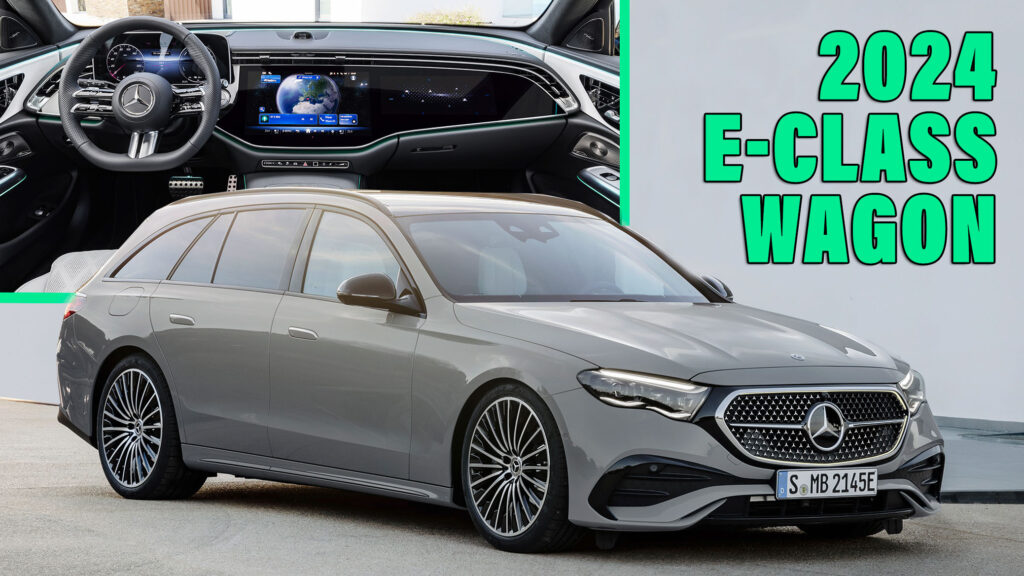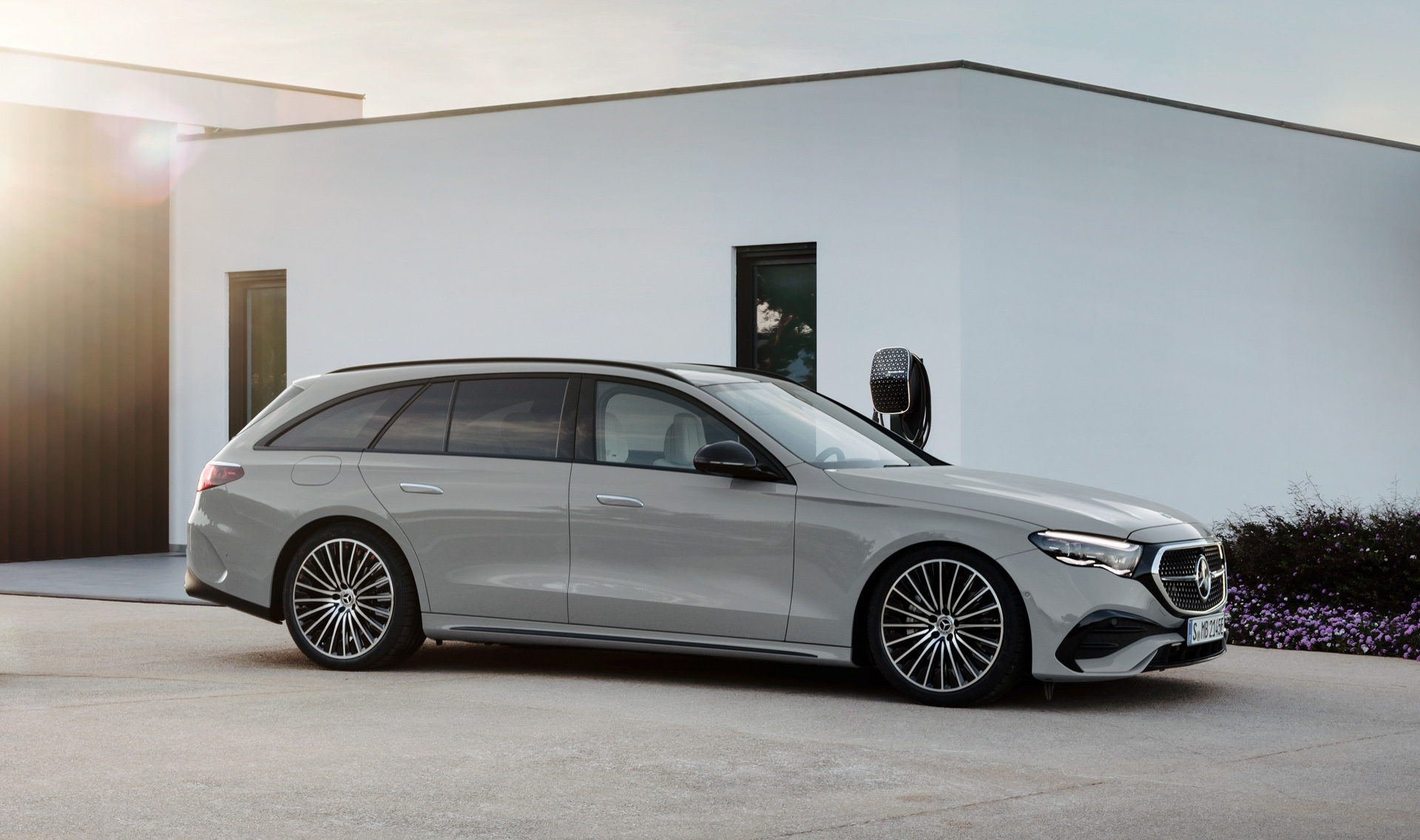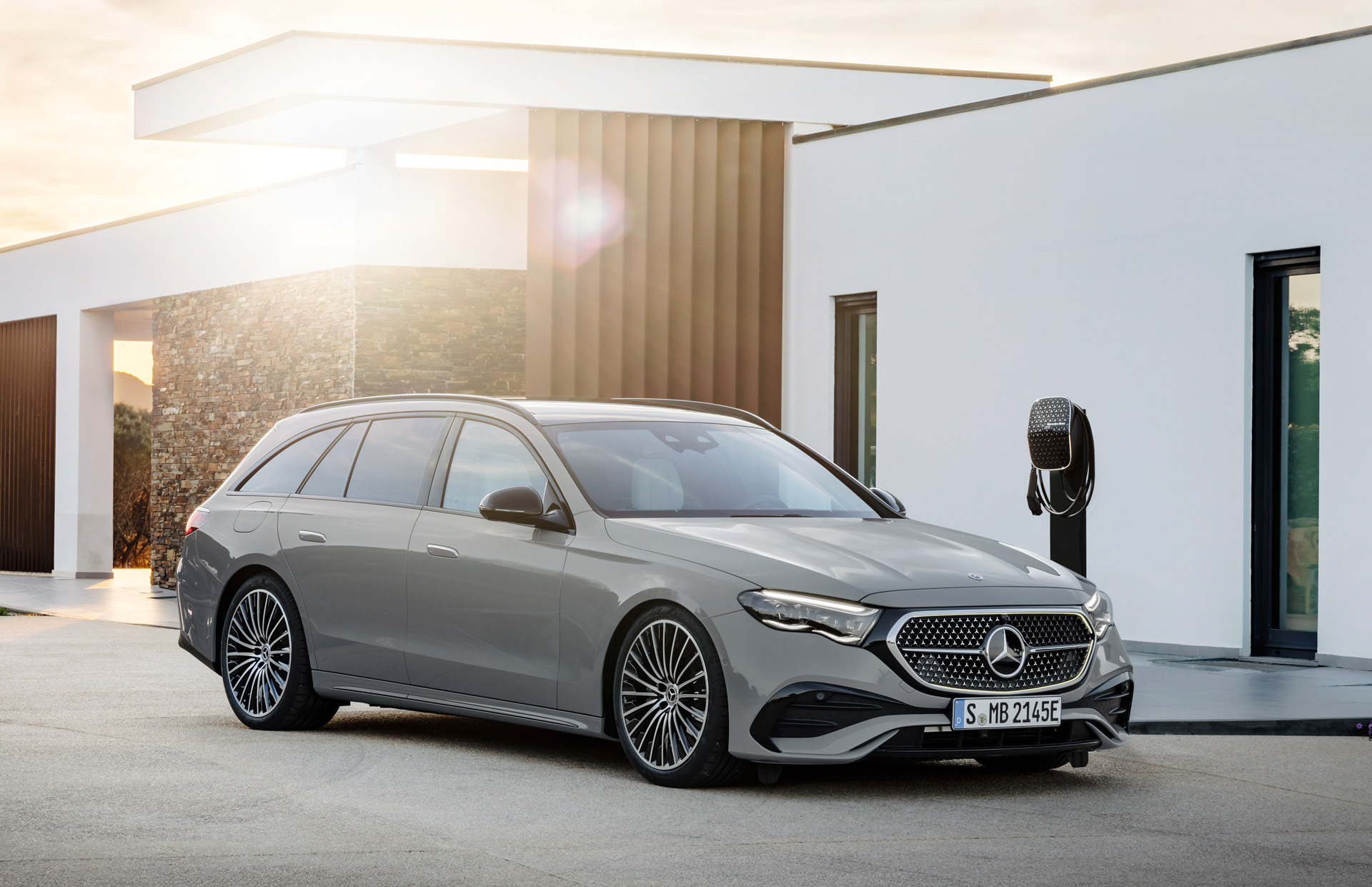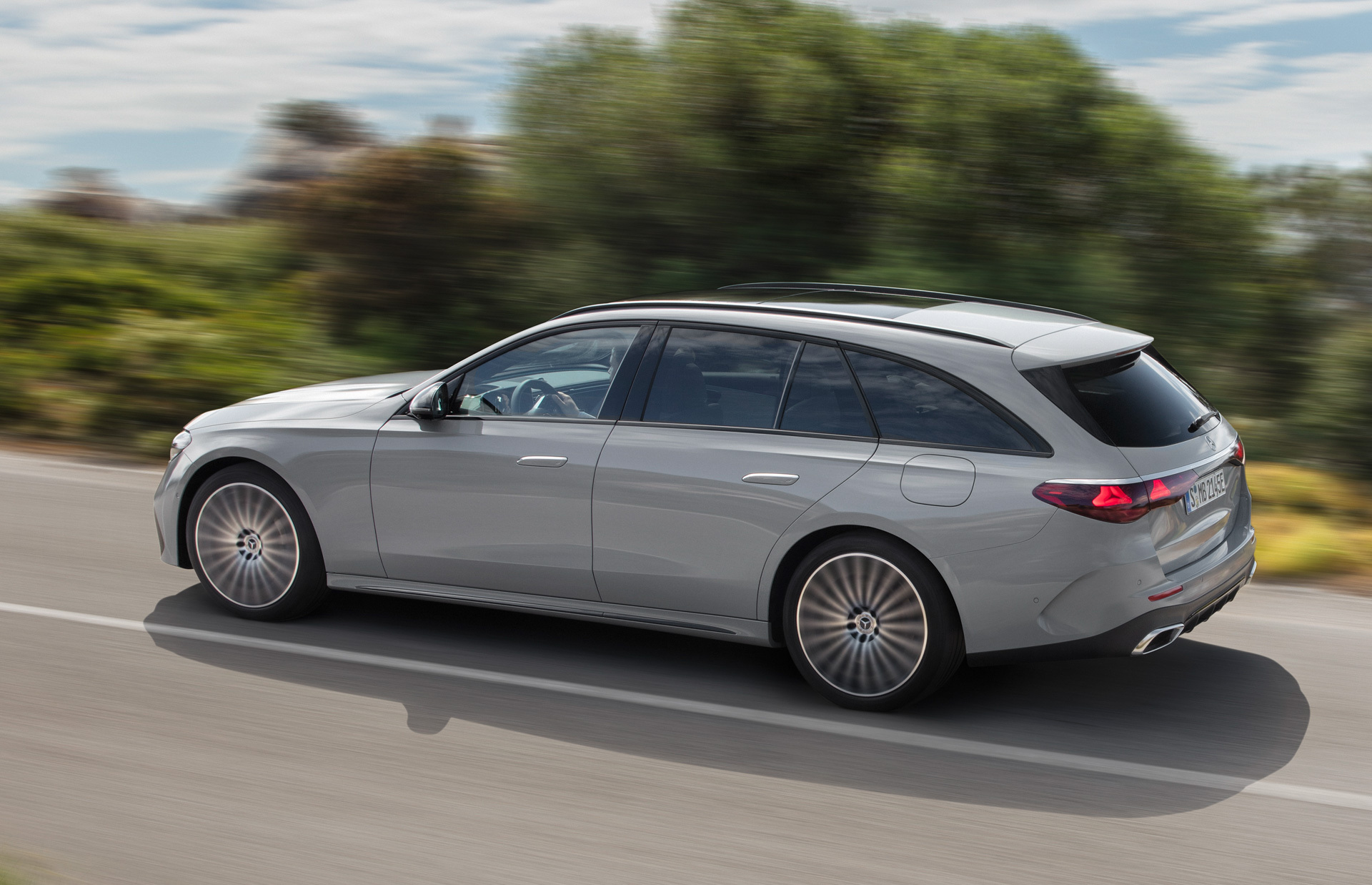Mercedes-Benz has been building aspirational wagons for almost 50 years, but in the new E-Class Estate it might just have come up with the most desirable yet. Previous E-Class wagons have mostly been fairly sensible, upright affairs, but the latest W214 load lugger that goes on sale in Europe this fall features an athletic-looking plunging roofline that gives the Estate a really dynamic appearance.
You might say it’s a little reminiscent of the old X218-code CLS Shooting Brake, though those swollen rear fenders and the pronounced crease above each rear wheelarch means we can’t help but think there’s some Audi RS6 in there too. But with the famous three-pointed star displayed either on or above a black-framed (and optionally illuminated) grille depending on which trim you’ve selected, and the same star repeated four times over in the LED taillights, any confusion over which German automaker created this handsome wagon will be short-lived.
More legroom, less luggage room
With all this talk of the latest E-Class Estate adopting a sportier, more stylish design, you might reasonably presume that practicality has taken a hit in the process. Not so, says Mercedes, which can reel off a ton of measurements to prove that the new car has fractionally more interior space in every measurement except front shoulder room (which is unchanged), and delivers tangible improvements in rear legroom, largely down to a 0.87-in (22 mm) wheelbase stretch.
But comparing trunk dimensions of the old and new wagons shows the new car has definitely sacrificed a little space for style. While the seats-down figures say capacity has improved almost imperceptibly from 64.2 to 64.6 cu-ft (1,820-1,830 liters), with the rear seats in place it actually falls back from 22.6 to 21.7 cu-ft (640-615 liters).
The good news for PHEV buyers is that the floor no longer has a large step in it caused by the battery location, but the overall space is once again much smaller than in the regular combustion models, and has also fallen slightly (to 16.2 cu-ft / 460 liters) versus the previous PHEV with the seats in place.
PHEV electric range has doubled
The sole PHEV option in the Euro lineup for this fall’s introduction is the E300e, which combines a 201 hp (204 PS) 2.0-liter, four-cylinder petrol with a 95 kW (127 hp / 129 PS) electric motor mounted inside the nine-speed automatic transmission. A total system output of 308 hp (312 PS) delivers the PHEV from zero to 62 mph (100 kmh) in 6.5 seconds and the 25.4 kWh battery is claimed to offer over 62 miles (100 km) of driving range – that’s more than double the range of the PHEV it replaces.
Mercedes says more four-cylinder PHEVs with both diesel and petrol engines will come to Europe later, as will a six-cylinder diesel, but initially the only other engine options are two 2.0-liter mild hybrids. The E200 (201 hp / 204 PS) and E220d diesel (194 hp / 197 PS) are both lifted straight from the sedan and feature a 17 kW (23 hp / 23 PS) instead of 15 kW (20 hp / 20 PS) e-motor this time around.
Like their sedan brothers, the E-Class wagons can be optioned with Mercedes’ Airmatic air suspension on all four corners, but the Estate goes one better than the sedan by offering standard air suspension at the rear of every model.
Selfie camera and auto parking are standard
Other than that, it’s the same E-Class package we met back in April when Mercedes revealed the 2024 sedan, which means it comes loaded with tech, starting with the standard MBUX Superscreen dashboard display that can be extended to the passenger side of the car as an option. The passenger display can stream TV and video content, even on the move, but any time a driver tries to glance across and sneak a look, a camera will spot the move and dim the screen to spoil the fun.
Related: 2024 Mercedes E-Class All-Terrain Spied, Wants To Be An Off-Road Influencer
There’s also a selfie camera and Zoom and Webex app compatibility allowing video conferencing when the car is parked up to keep business types productive, and the infotainment screen can show TikTok and games like Angry Birds for people looking to avoid work altogether. And a new Sound Visualisation system translates the sound of music and effects from films and apps being played through the Hi-Fi into pulses from the Active Ambient Lighting setup.
Other, potentially more useful tech includes Digital Key (now for both Apple and Android) and an automated parking system, both of which are fitted as standard. That kind of parking has to be done with the driver in the car, but upgrades to remote parking (via smartphone) and memory parking (which can store 5 different maneuvers) are available optionally, as is pre-installation for automatic valet parking, though that’s dependent on the passing of relevant laws and suitable parking garages being built with the right hardware.
Could the 2024 E-Class wagon persuade you not to go down the obvious path and buy a premium SUV?






























